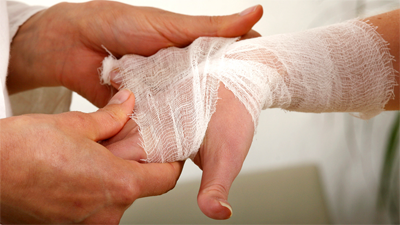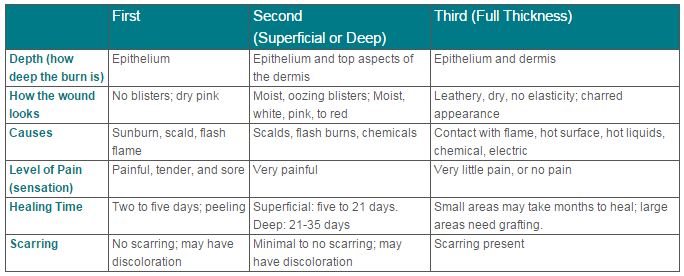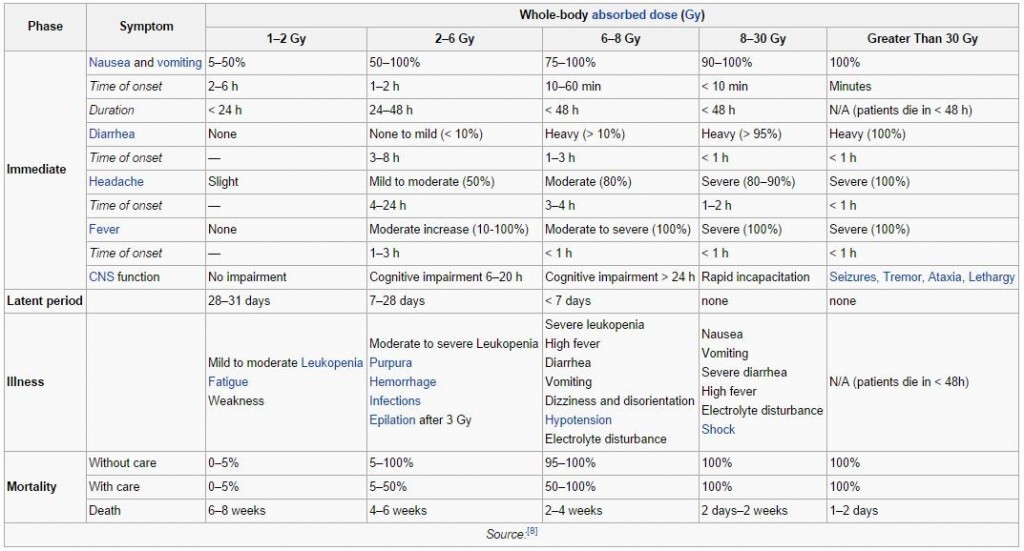First Aid: Burn Wounds

Burns can happen in many different ways and have varying degrees of severity. In this course we will go over some of the causes of burn wounds and how to understand the degrees of burn wounds.
It is important to remember that when caring for the patient with a burn injury there are many factors that impact your course of action.
Access to costly wound products might not be an option in a post collapse situation, therefor we are going to have to have some of these supplies on hand, or be able to think on our feet and come up with the best possible solution.
Important: To get the most out of this first aid course please do not skip ahead. Everything in this course is designed to walk you through the learning process. From understanding your responsibilities and limitations, to what supplies you need and how to use them.
Course Information:
Lesson 3: Burn Wounds
Video Time: 14:55
This Lesson will explain the different levels of burn wounds along with the different types of burn wounds you might encounter.
Burn Classification & Types Of Burns
Burn Classifications
 First degree:
First degree:
- Includes only the outer layer of skin, the epidermis
- Skin is usually red and very painful
- Equivalent to superficial sunburn without blisters
- Dry in appearance
- Healing occurs in 3-5 days, injured epithelium peels away from the healthy skin
- Hospitalization is for pain control and maybe fluid imbalance
Second degree: Can be classified as partial or full thickness.
Partial thickness
- Blisters can be present
- Involve the entire epidermis and upper layers of the dermis
- Wound will be pink, red in color, painful and wet appearing
- Wound will blanch when pressure is applied
- Should heal in several weeks (10-21 days) without grafting, scarring is usually minimal
Full thickness
- Can be red or white in appearance, but will appear dry.
- Involves the destruction of the entire epidermis and most of the dermis
- Sensation can be present, but diminished
- Blanching is sluggish or absent
- Full thickness will most likely need excision & skin grafting to heal
Third degree:
- All layers of the skin is destroyed
- Extend into the subcutaneous tissues
- Areas can appear, black or white and will be dry
- Can appear leathery in texture
- Will not blanch when pressure is applied
Chemical Burns
These burns are caused by acids or alkali substances. Alkali substances usually cause severe injury since they react with the lipids in the skin.
Substances like battery acid or sulfuric acid will continue to cause damage and eat away at the skin until the agent is inactivated or
Electrical Burns
These types of burn wounds are caused by either AC or DC current. Current follows the path of least resistance and causes injury in areas other than the point of contact or entry, therefor they cannot be judged from the external injury alone.
Like thermal burns, electrical wounds are caused by very high heat. Electrical burns differ from thermal or chemical burns in that they cause much more subdermal damage.
Electrical burns can be caused by a variety of ways such as touching or grasping “live” electrically charged objects, short-circuiting, inserting fingers into electrical sockets or touching electrified water. Although less likely, lightning strikes are also a cause of electrical burns.
Low-voltage burn: A burn produced by contact with a power source of 500 volts or less is classified as a low-voltage burn. The current at this voltage is not enough to cause tissue damage along its path except at the contact site. This type of burn may be mild, superficial, or severe depending on the contact time.
High voltage burn: This burn is very severe as the victim makes direct contact with the high voltage supply and the damage runs its course throughout the body. Exterior injuries are misleading as most of the damage occurs underneath the skin. In this case, subdermal tissues are severely damaged.
Radiological Burns
A radiation burn is damage to the skin or other biological tissue caused by exposure to radiation. This is caused by alpha, beta or gamma radiation. The most common type of radiation burn is a sunburn caused by UV radiation and high exposure to X-rays.
Radiation sickness is also a type of radiological burn. The absorbed dose of radiation is measured in units of gray (Gy) or rad. 1 rad = 0.01 Gy SEE CHART BELOW
Training & Resources
Download the Planning, Guidance and Response to a Nuclear Detonation and Burn Prevention PDF's
Get Started...
Click the button to start the next module and learn how to assess breaks and sprains.
Course Home
Click the button to return to the main course page with the list of all the modules in the first aid course.
DISCLAIMER: THIS WEBSITE DOES NOT PROVIDE MEDICAL ADVICE
The information, including but not limited to, text, graphics, images and other material contained on this website are for informational purposes only. The purpose of this website is to promote broad consumer understanding and knowledge of various health topics. It is not intended to be a substitute for professional medical advice, diagnosis or treatment. Always seek the advice of your physician or other qualified health care provider with any questions you may have regarding a medical condition or treatment and before undertaking a new health care regimen, and never disregard professional medical advice or delay in seeking it because of something you have read on this website.





